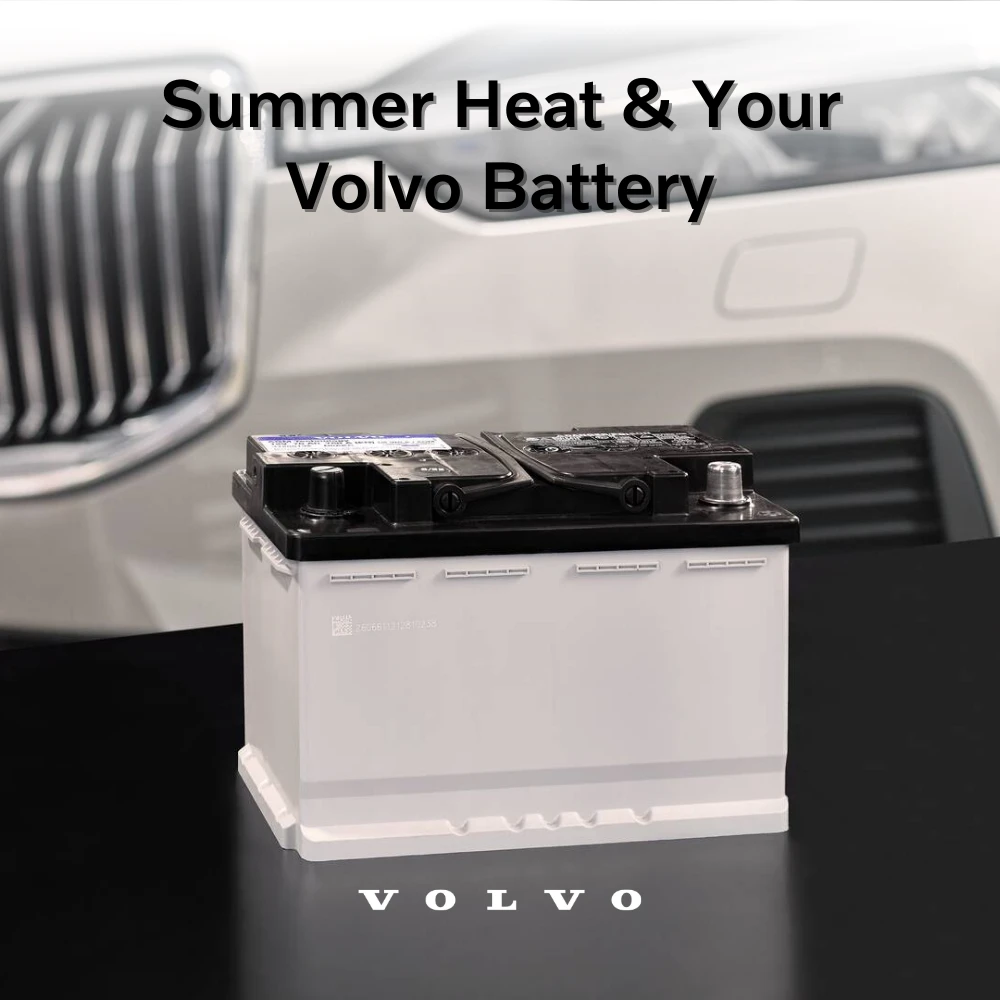
How Summer Heat Impacts Your Volvo Battery
As temperatures soar in Connecticut, your Volvo’s battery faces unique challenges. Many drivers associate battery problems with winter, but summer heat can be even more damaging. High temperatures accelerate battery fluid evaporation, degrade internal components, and increase the risk of failure—especially if your Volvo vehicle is exposed to direct sunlight or frequent short trips.
Common Signs of a Weak Volvo Battery in Summer
Watch for these warning signs that your Volvo’s battery may be struggling in the heat:
-
Slow Engine Crank: The engine turns over more slowly than usual when starting.
-
Dim Headlights or Interior Lights: Lights may appear weaker, especially when idling.
-
Electrical Issues: Malfunctions in the infotainment system, air conditioning, or power windows.
-
Dashboard Warning Light: The battery or check engine light may illuminate.
-
Corroded Battery Terminals: White, ashy deposits on the terminals signal corrosion, which impedes performance.
Why Summer Heat Is Tough on Volvo Batteries
-
Fluid Evaporation: Excessive heat causes battery fluid to evaporate, exposing internal plates and reducing capacity.
-
Accelerated Corrosion: High temperatures speed up internal corrosion, shortening battery life.
-
Overcharging: Hot weather can cause the alternator to overcharge the battery, especially in older vehicles, leading to swelling or damage.
-
Increased Electrical Demand: Air conditioning and entertainment systems put extra strain on the battery during summer drives.
Preventative Tips to Protect Your Volvo Battery
Keep your Volvo running reliably all summer with these expert tips:
-
Park in the Shade
-
Whenever possible, park your Volvo in a garage or shaded area to reduce heat exposure. Use sunshades to block direct sunlight and keep the cabin cooler.
-
Keep Battery Terminals Clean
-
Regularly inspect and clean battery terminals to prevent corrosion. Corroded connections can drain power and reduce starting reliability.
-
Check Battery Fluid Levels
-
Ensure the battery fluid is at the proper level. If it’s low, top it off with distilled water (if your battery is serviceable).
-
Schedule Regular Maintenance
-
Have your Volvo’s battery and charging system professionally inspected every 3–6 months, especially before and after peak summer heat.
-
Limit Extended Idling
-
Avoid unnecessary idling in hot weather, as it increases battery load and engine compartment temperatures.
-
Monitor Electrical Accessories
-
Reduce the use of high-demand accessories (like A/C and chargers) when the engine is off to prevent unnecessary battery drain.
When to Replace Your Volvo Battery
If your battery is more than three years old or you notice any of the warning signs above, it’s wise to have it tested by a certified Volvo Connecticut technician. Proactive replacement can prevent unexpected breakdowns and keep your summer travels stress-free.
Trust Gengras Volvo of East Hartford for expert battery inspections, maintenance, and replacements. Our team ensures your Volvo is ready to handle the summer heat—so you can drive with confidence all season long.